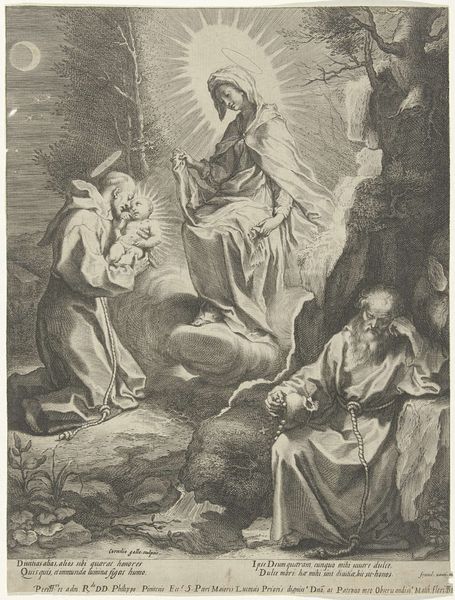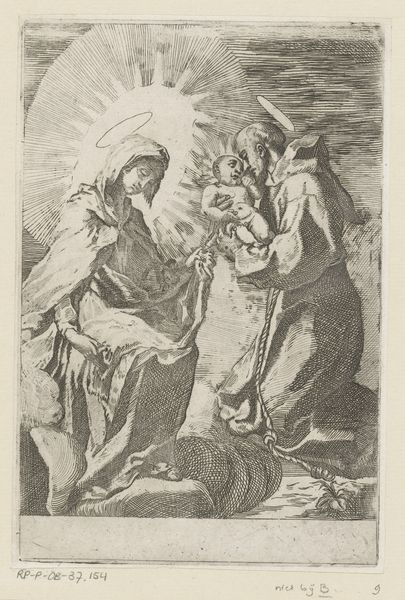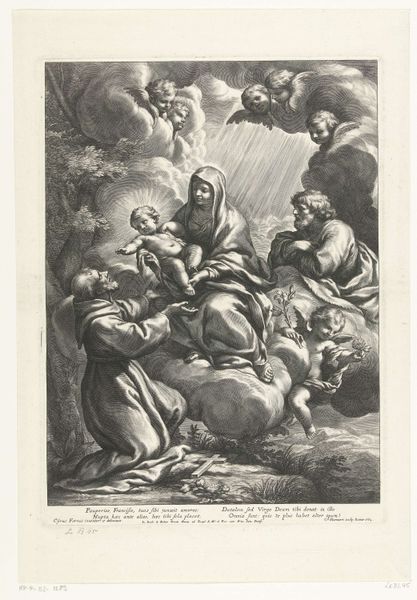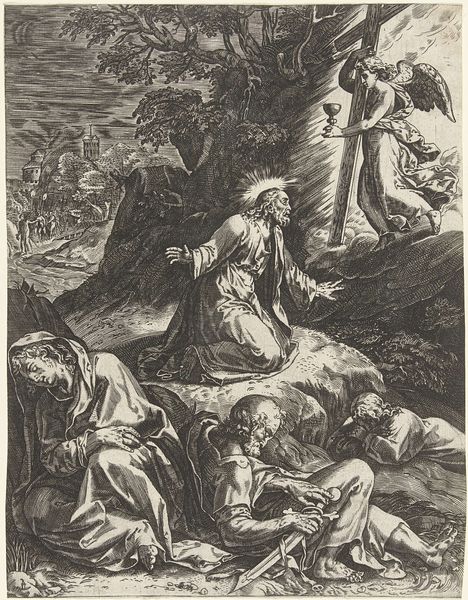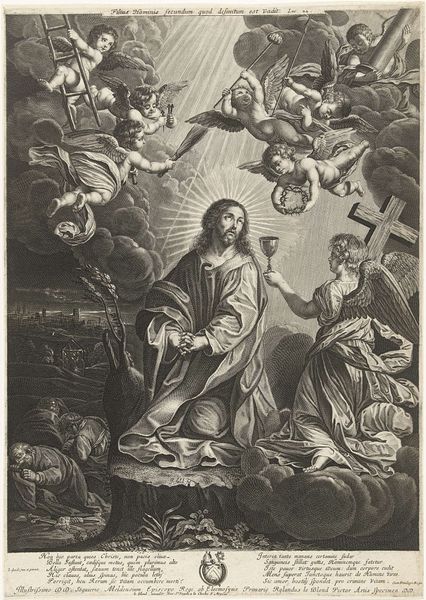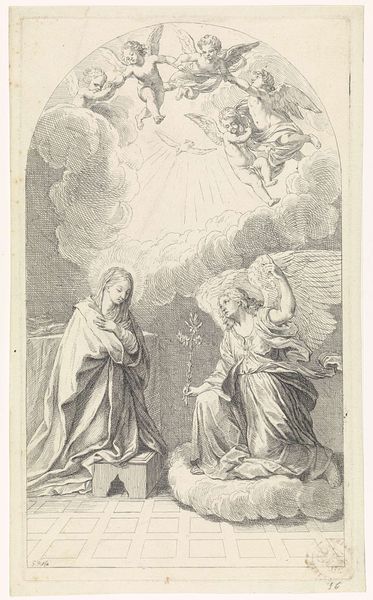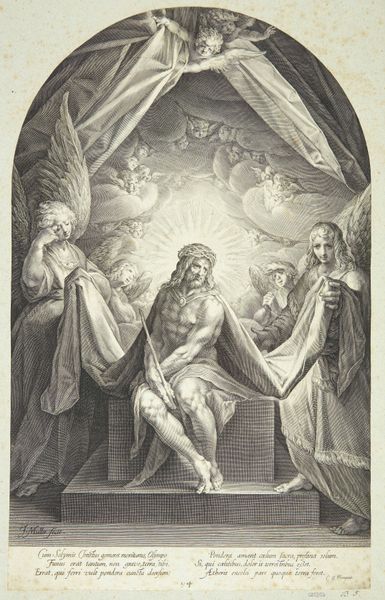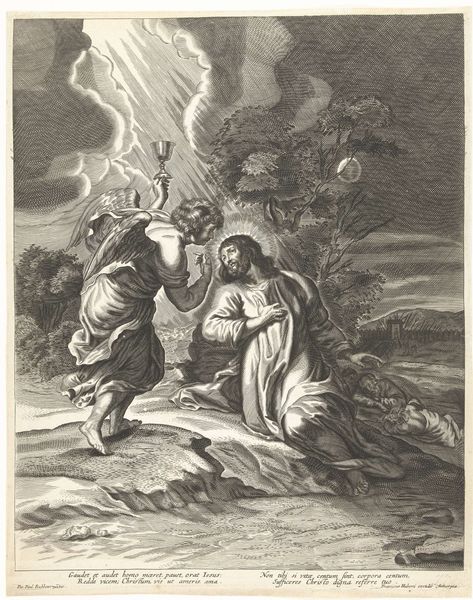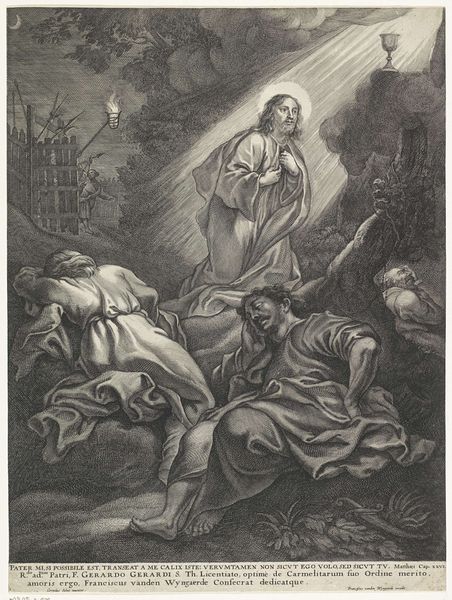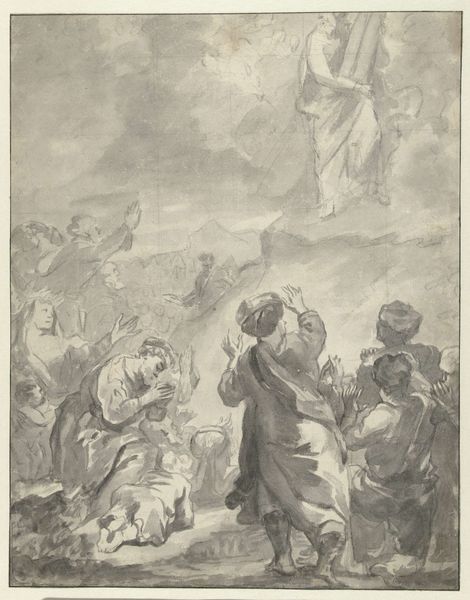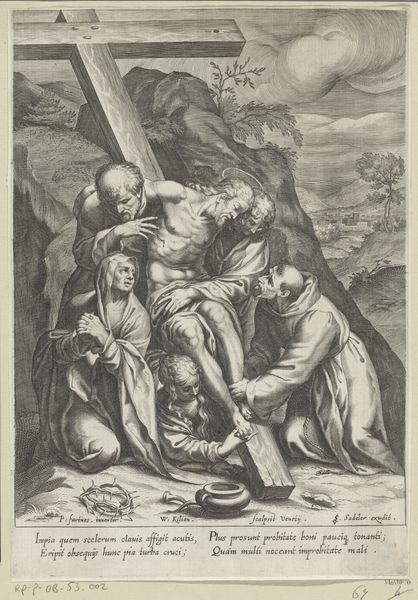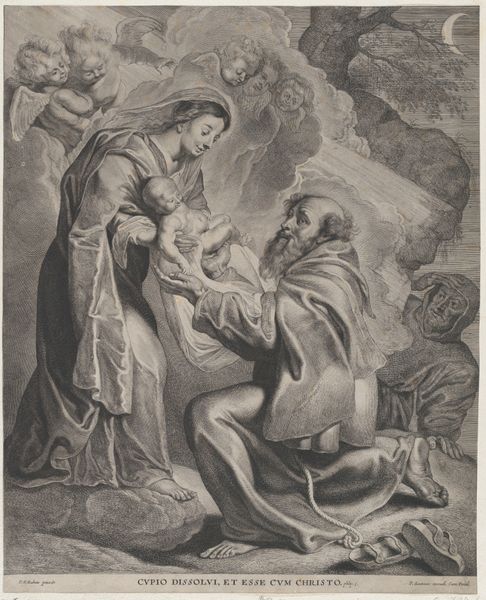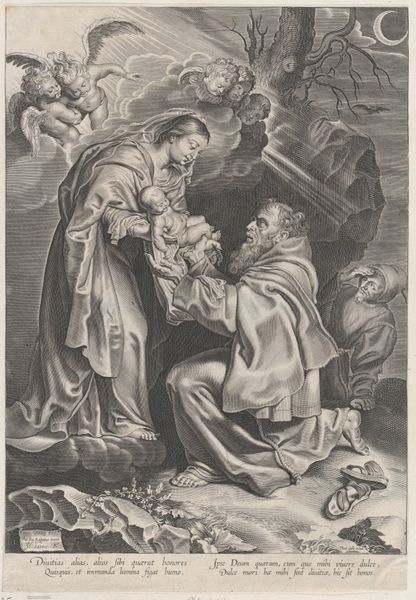
H. Franciscus van Assisi heeft een visioen van Maria en het Kind 1586 - 1633
0:00
0:00
anonymous
Rijksmuseum
engraving
#
baroque
#
old engraving style
#
landscape
#
figuration
#
history-painting
#
engraving
Dimensions: height 278 mm, width 210 mm
Copyright: Rijks Museum: Open Domain
Curator: Here we have an engraving from between 1586 and 1633, currently residing at the Rijksmuseum. The piece is entitled “H. Franciscus van Assisi heeft een visioen van Maria en het Kind"—or, “St. Francis of Assisi Has a Vision of Mary and the Child.” Editor: It strikes me as quite ethereal, this whole scene feels elevated beyond earthly constraints, despite the rocky landscape surrounding the figures. Curator: The baroque style lends itself to such drama. Notice how the anonymous artist uses engraving to articulate a clear compositional structure: we have this very strong diagonal from the seated Francis on the left ascending to the Virgin and Child, drawing the eye upwards. Editor: Yes, and that light source—is it meant to be divine light?—shines rather brightly on Mary. I am particularly interested in how such intricate detailing could have been produced through an engraving process. It speaks of precision labor. One almost wonders who might have commissioned it, and the circumstances of its usage in wider society at that time? Curator: The artist emphasizes the textures, doesn't he? Look closely at the drapery, for instance. Each fold is sharply defined, almost sculptural in its form, but the visual depth of the image does add significant meaning: note the somber mood on the left against the burst of beatific energy. Editor: That sharp distinction in moods, between St. Francis contemplating mortality with rosary beads and his vision filled with light does highlight life, death and the spaces in between—it creates a poignant tension between spiritual yearning and bodily reality, what that work must have meant to individuals! I'd almost forgotten there are people working behind the scenes. The labour alone would be substantial in creating the metal plate... Curator: Agreed. From a purely aesthetic viewpoint, I'm intrigued by the balance the artist struck given the heavy symbolic nature of the subject. It's a piece that clearly communicates through contrasts, both in its formal composition and thematic concerns. Editor: It certainly brings to mind broader questions regarding devotional practice as manual labor. Let us pause on those ideas and reflect upon art.
Comments
No comments
Be the first to comment and join the conversation on the ultimate creative platform.
